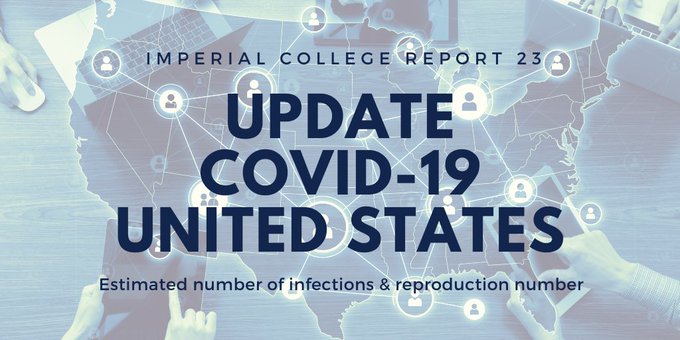
Jacob Steinhardt
@JacobSteinhardt
Followers
7,624
Following
69
Media
16
Statuses
329
Assistant Professor of Statistics, UC Berkeley
Joined December 2011
Don't wanna be here?
Send us removal request.
Explore trending content on Musk Viewer
Edmundo
• 263422 Tweets
CHARLOTTE X TIKTOKLIVE99
• 228971 Tweets
#Narin
• 226687 Tweets
ANILPIN WE ARE THE ONE
• 194506 Tweets
#ปิ่นภักดิ์EP6
• 186729 Tweets
#光る君へ
• 108845 Tweets
KIM TAEHYUNG
• 54227 Tweets
プロジェクトKV
• 53756 Tweets
Zapatero
• 50873 Tweets
東京ドーム
• 39376 Tweets
İdam
• 30738 Tweets
Kostic
• 29906 Tweets
ポルノグラフィティ
• 27650 Tweets
SEVENTEEN AT LOLLAPALOOZA
• 21604 Tweets
NFL Sunday
• 15407 Tweets
ماهر الجازي
• 15325 Tweets
源氏物語
• 15153 Tweets
#降り積もれ孤独な死よ
• 14706 Tweets
LESSONS FROM BIU
• 13654 Tweets
Last Seen Profiles
My student Kayo Yin needs your help. Her visa has been unnecessarily delayed, which would prevent her from coming to UC Berkeley to start her studies. Despite bringing all required documents, the
@StateDept
refused to process the visa and it could take months to re-process.
34
332
1K
This NYT article on Azalia and Anna's excellent chip design work is gross, to the point of journalistic malpractice. It platforms a bully while drawing an absurd parallel to
@timnitGebru
's firing.
@CadeMetz
should be ashamed. (not linking so it doesn't get more clicks)
17
46
416
Can we build an LLM system to forecast geo-political events at the level of human forecasters?
Introducing our work Approaching Human-Level Forecasting with Language Models!
Arxiv:
Joint work with
@dannyhalawi15
,
@FredZhang0
, and
@jcyhc_ai
12
70
381
Awesome to see
@DeepMind
's recent language modeling paper include our forecasts as a comparison point! Hopefully more papers track progress relative to forecasts so that we can better understand the pace of progress in deep learning.
1
23
198
I quite enjoyed this workshop, and was pretty happy with the talk I gave (new and made ~from scratch!).
My topic was using LLMs to help us understand LLMs, and covers great work by
@TongPetersb
,
@ErikJones313
,
@ZhongRuiqi
+others. You can watch it here:
1
16
91
New paper on household transmission of SARS-CoV-2: , with
@mihaela_curmei
,
@andrew_ilyas
, and
@OwainEvans_UK
. Very interested in feedback! We show that under lockdowns, 30-55% of transmissions occur in houses. 1/4.
2
14
50
Interestingly, forecasters' biggest miss was on the MATH dataset, where
@alewkowycz
@ethansdyer
and others set a record of 50.3% on the very last day of June! One day made a huge difference.
2
6
50
My tutorial slides on Aligning ML Systems are now online, in HTML format, with clickable references!
[NB some minor formatting errors were introduced when converting to HTML]
Next up
@satml_conf
is
@JacobSteinhardt
who is giving a terrific tutorial on the topic of "Aligning ML Systems with Human Intent"
(like all SaTML content, it is being recorded and will be released in a couple of days)
1
7
33
1
7
45
It's particularly gross that the article repeatedly draws parallels with Timnit Gebru's firing, which is completely different in terms of the facts on the ground. Timnit agrees: . Seems clear that NYT did this for clicks.
2
2
43
Nora is a super creative thinker and very capable engineer. I'd highly recommend working for her if you want to do cool work on understanding ML models at an open-source org!
My Interpretability research team at
@AiEleuther
is hiring! If you're interested, please read our job posting and submit:
1. Your CV
2. Three interp papers you'd like to build on
3. Links to cool open source repos you've built
to contact
@eleuther
.ai
10
44
249
5
0
38
Some nice pushback on my GPT-2030 post by
@xuanalogue
, with lots of links!
2
2
37
@EpochAIResearch
is one of the coolest (and in my opinion underrated) research orgs for understanding trends in ML. Rather than speculating, they meticulously analyze empirical trends and make projections for the future. Lots of interesting findings in their data!
We at
@EpochAIResearch
recently published a new short report!
In "Trends in Training Dataset Sizes", we explore the growth of ML training datasets over the past few decades.
Doubling time has historically been 16 months for language datasets and 41 months for vision.
🧵1/3
1
5
23
0
4
24
In the next post of this series, I argue that when predicting the future of ML, we should not simply expect existing empirical trends to continue. Instead, we will often observe qualitatively new, "emergent" behavior: .
0
2
21
I elaborate on these and consider several additional ideas in the blog post itself.
Thanks to
@DanHendrycks
for first articulating the complex systems perspective on deep learning to me. He's continuing to do great work in that and other directions at
0
0
18
If you want to join me on this, you can register predictions on Metaculus for the MATH and Massive Multitask benchmarks:
*
*
It's pretty easy--just need a Google account. The MATH one is open now and Multitask should be open soon.
3
4
16
@aghobarah
Definitely agree in terms of research track record. But in terms of professional standing, Anna's a PhD student and Azalia's on the academic job market right now. This is important, because it means their careers are more affected by this sort of press (vs. a tenured prof).
0
0
16
If you’re interested in this,
@andrew_ilyas
and I have a working paper discussing these issues in more detail: .
0
1
15
@chhaviyadav_
Consulates are closed due to COVID-19, so incoming international students can't apply for visas. Has been true for a while but now at the point it is affecting students directly. See e.g. this June letter from GOP representatives asking Pomep to fix it:
1
1
15
Some exciting new work by my student
@DanHendrycks
and collaborators. We identify seven hypotheses about OOD generalization in the literature, and collect several new datasets to test these. Trying to add more "strong inference" to ML (cf. Platt 1964).
0
1
13
Good to see this analysis, but misleading headline. 24 states have *point estimates* over 1, but uncertainty in estimates is large. Let's consider null hypothesis that Rt=0.95 everywhere. Then would expect 19 states with estimates above 1 (eyeballing stdev=0.17 from fig. 4).
UPDATE:
#covid19science
#COVID19
in USA
➡️Initial national average reproduction number R was 2.2
➡️24 states have Rt over 1
➡️Increasing mobility cause resurgence (doubling number of deaths in 8 weeks)
➡️4.1% of people infected nationally
🔰Report
10
43
47
1
1
13
Some great recommendations from Chloe Cockburn (a program officer at Open Philanthropy, where I worked last summer). My understanding is that DA elections (starts at
#9
on the list) are a high-impact route to police and criminal justice reform.
0
0
10
Signal-boosting this pushback since Nuño has a strong forecasting track record.
I agree AI part is not traditional ref. class analysis, but think "AI is an adaptive self-replicator, this often causes problems" is importantly less inside-view than [long arg. about paperclips].
@JacobSteinhardt
@DhruvMadeka
I like the overall analysis. I think that the move of noticing that AIs might share some characteristics with pandemics, in that AIs might be self-replicating, is an inside-view move, and I don't feel great about characterizing that as a reference class analysis.
1
0
2
1
0
9
We are excited to continue this work! Please email
@dannyhalawi15
at dannyhalawi15
@gmail
.com to get in touch.
3
0
9
Interesting opportunity to do mechanistic interpretability research! (I have worked/collaborated with Redwood and enjoyed it.)
I'm helping Redwood Research run REMIX, a 1 month mechanistic interpretability sprint where 25+ people to reverse engineer circuits in GPT-2 Small. This seems a great way to get experience exploring
@ch402
's transformer circuits work.
Apply by 13th Nov!
7
28
167
0
0
9
@satml_conf
was a great experience. More interesting conversations and ideas per day than at ICML, NeurIPS, or ICLR. The smaller size contributed, as well as a great program. Thanks to
@NicolasPapernot
and all the organizers!
And
@satml_conf
is a wrap! Thank you to all the attendees for their amazing energy!
Excited to announce that
@carmelatroncoso
has agreed to co-chair the conference with me next year!!
4
6
91
1
1
8
More criticism of Yale wastewater study, links to cool analysis by
@xangregg
. One thing to keep in mind is that there's excellent, careful researchers in this area who *aren't* publishing results yet because they're waiting for better data. Similar to how serology played out.
1
0
7
@xuanalogue
Thanks, I appreciated this! I don't think I'm claiming data/scale is all that matters, and agree ideas are an important part of the picture. For instance Parsel is an example of ideas helping a lot on APPS.
1
0
7
I wrote one of these (the measurement RFP) so I explain here why I think measurement is a promising tool for AI alignment:
1
1
6
Wow, this is great! Everyone should read Carol's piece if they want to understand transformer inference costs.
0
1
6
This is a very thoughtful article by
@_achan96_
that I enjoyed reading!
0
0
4
A very creative and thought-provoking read by
@DanHendrycks
0
0
5
Blog post up on Bounded Regret for those who want to learn more!
Papers often propose a similarity metric and justify it with intuitive desiderata, but different intuitive tests can make any method look good. Our work (joint with Jean-Stanislas Denain and
@JacobSteinhardt
) provides a quantitative benchmark for evaluating similarity metrics 4/7
1
0
2
0
0
5





































































